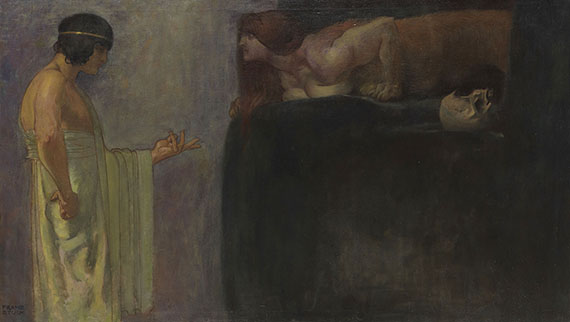Dictionary


Josephine Style
The term "Joseph style" or Josephinism, as it is generally known (named after Joseph II, the Austrian emperor from 1765, son of Maria Theresa), refers to Austrian late rococo art from 1760 to 1780/90. It can be compared to Louis-Seize or the late rococo style, and was a combination of classical and late baroque influences. The gradual adoption of the new style was first evident in interiors, as exemplified in the Vieux-Laque Zimmer in the Schloss Schönbrunn, which was redecorated in 1765 at Maria Theresa’s behest. Decor and furniture were characterised by symmetrical and straightened forms, by fluted, pointed legs, as well as symmetrical, often linear or geometric inlay ornament. The furniture can be distinguished from its French counterparts by its less ostentatious and intricate design.
Josephinist painting appropriated classical characteristics, but the late baroque style proved itself the most dominant. Key exponents of Josephenist painting include
Johann Ignaz Zimbal, and the interior designer Johann Baptist Wenzel Bergl. Johann Christian Brand was an important landscape painter of the period. The new movement also influenced Simon Troger followers, although only in their adoption of classical principles (in the emphasis on individual figures, for example). Heinrich Friedrich Füger and the sculptor Franz Anton von Zauner were active at the end of the epoch and its transition into classicism. Von Zauner's work was directly linked to Georg Raphael Donner’s style and his followers.
The term "Joseph style" or Josephinism, as it is generally known (named after Joseph II, the Austrian emperor from 1765, son of Maria Theresa), refers to Austrian late rococo art from 1760 to 1780/90. It can be compared to Louis-Seize or the late rococo style, and was a combination of classical and late baroque influences. The gradual adoption of the new style was first evident in interiors, as exemplified in the Vieux-Laque Zimmer in the Schloss Schönbrunn, which was redecorated in 1765 at Maria Theresa’s behest. Decor and furniture were characterised by symmetrical and straightened forms, by fluted, pointed legs, as well as symmetrical, often linear or geometric inlay ornament. The furniture can be distinguished from its French counterparts by its less ostentatious and intricate design.
Josephinist painting appropriated classical characteristics, but the late baroque style proved itself the most dominant. Key exponents of Josephenist painting include
Johann Ignaz Zimbal, and the interior designer Johann Baptist Wenzel Bergl. Johann Christian Brand was an important landscape painter of the period. The new movement also influenced Simon Troger followers, although only in their adoption of classical principles (in the emphasis on individual figures, for example). Heinrich Friedrich Füger and the sculptor Franz Anton von Zauner were active at the end of the epoch and its transition into classicism. Von Zauner's work was directly linked to Georg Raphael Donner’s style and his followers.
Offers




